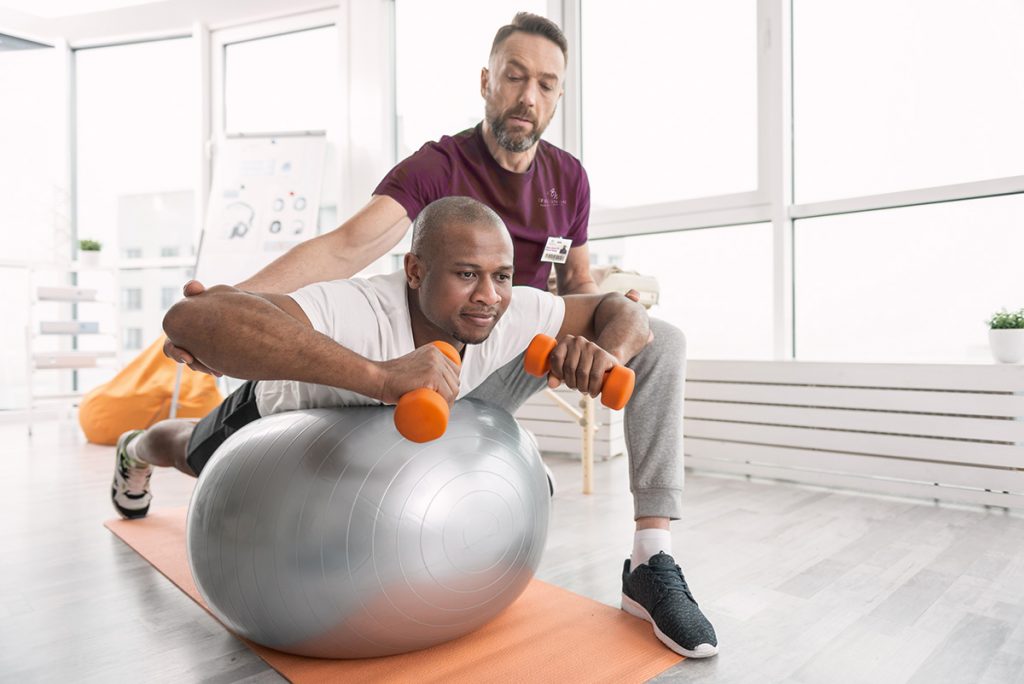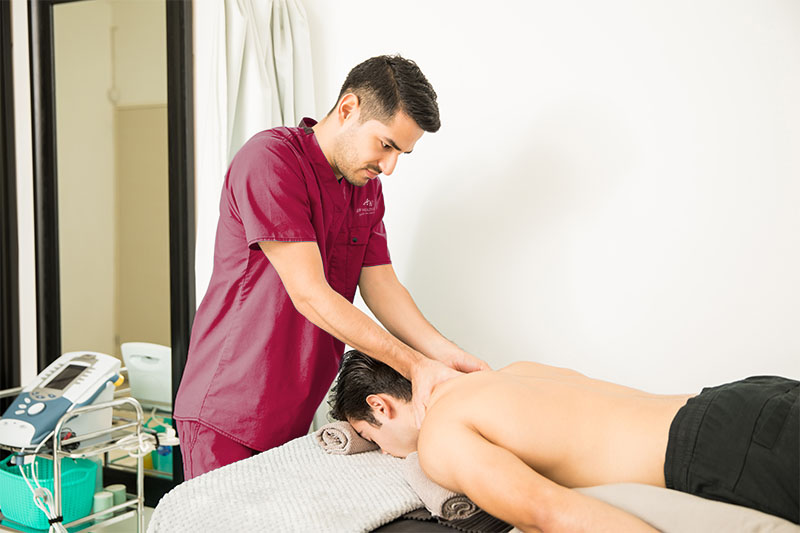What Is Pain?
Pain is an unpleasant sensation that can range from mild, localized discomfort to agony. Pain has both physical and emotional components. The physical part of pain results from nerve stimulation. Pain may be contained to a discrete area, as in an injury, or it can be more diffuse, as in disorders like fibromyalgia. It may be acute or chronic, lasting more than 6 months.
Pain Affects Your Life
Persistent pain saps energy and disrupts sleep. It can interfere with work and leisure activities and worsen other medical conditions.
Pain is often under-reported because of fear of addiction. But if your pain isn’t being addressed successfully by your primary doctor, or if you have a specific type of pain, a new pain or new symptoms such as numbness or tingling, you should seek out a specialist. Pain specialists identify the causes of pain and treat acute pain aggressively to prevent the onset of chronic pain most often with non-invasive treatments.
Types of Pain
- Neuropathic: Pain which is caused by nerve irritation. This includes such conditions as neuropathy, radicular pain and trigeminal neuralgia; burning, tingling, and pins and needles sensations.
- Nociceptive: Pain which typically results from tissue injury. Common types of nociceptive pain are arthritis pain, mechanical back pain or post surgical pain of bones, muscles and nerves (visceral)
- Inflammatory: Pain caused by abnormal inflammation of an inappropriate response by the body’s immune system. Conditions in this category include gout and rheumatoid arthritis.
- Functional Pain: Pain without obvious origin. Examples of such conditions are fibromyalgia and irritable bowel syndrome.
Pain Management Specialists
Pain specialists identify the causes of pain and treat acute pain aggressively to prevent the onset of chronic pain using non-invasive treatments as much as possible.
The pain specialist will take a comprehensive history, do a complete physical and assess pain for duration, intensity, locations, aggravating and relieving factors, prior medications used, family history of drug or alcohol abuse and patient goals for pain control. The specialist may also order some lab work to determine possible causes of pain.
When Should I See A Pain Management Specialist?
Pain is often under-reported because of fear of addiction as well as physician misinformation. But if your pain isn’t being addressing successfully by your primary doctor, or if you have a specific type of pain, you should seek out a specialist.
Treating Pain Without Drugs
Simple comfort measures can help reduce pain. Massage, soft touch, and warm applications like pet therapy or folding warm clothes are relaxation techniques beneficial for some.
- Cognitive and Behavioral Therapy (CBT) is a form of talk therapy that helps people change negative thoughts and behaviors that often contribute to pain. It is often used in combination with other pain management treatments.
- Progressive Muscle Relaxation (PMR) is a deep relaxation technique. It involves tensing and then relaxing muscles, one by one. This helps you release physical tension, which may ease stress and anxiety. Research has shown that PMR offers a range of benefits, including pain relief and better sleep.
- Complimentary Medicine which includes massage, acupuncture and acupressure.
- Alternative Medicines also have been shown to reduce pain. They include acupuncture, chiropractic, massage, hypnosis, biofeedback, meditation, yoga, and tai-chi
Which medicines are used to treat pain?
Acetaminophen and NSAIDS can be bought without a doctor’s order. But follow your doctor’s directions when taking these. Acetaminophen can cause liver damage and NSAIDS can cause stomach bleeding or kidney problems if not taken correctly.
Narcotics are used for moderate to severe pain. At first, your healthcare provider may give you a low dose. The dose will slowly be increased until you reach the best dose for your pain.
For questions about pain and pain medication, call AW Health Care!
MO (314) 726-5600 IL (618) 344-8800.
What is an Opioid?
Opioids are a class of drugs that include heroin, and synthetic opioids such as fentanyl, and pain relievers available legally by prescription, such as oxycodone (OxyContin®), hydrocodone (Vicodin®), codeine, morphine, and many others. These drugs interact with opioid receptors on nerve cells in the body and brain. Opioid pain relievers are generally safe when taken for a short time and as prescribed, but because they produce euphoria in addition to pain relief, they can be misused. Regular use—even as prescribed by a doctor—can lead to dependence and, when misused, opioid pain relievers can lead to overdose incidents and deaths. An opioid overdose can be reversed with the drug naloxone when given right away. Fortunately, effective medications exist to treat opioid use disorders: methadone, buprenorphine, and naltrexone. These medications help many recover from opioid addiction.
National Institute on Drug Abuse
https://www.drugabuse.gov/drugs-abuse/opioids
Physical Therapy
Physical therapy can help people with long-term, or chronic pain. The therapist may look for areas of weakness or stiffness that adds stress to the places that hurt. Specific exercises are prescribed to ease pain. These may include a combination of stretching and strengthening exercises.
Some therapists are trained in massage techniques to help with pain. Some massage may not feel too comfortable, But the therapist takes great care to make sure it is safe and helpful for you.
In addition, your therapist may use heat and/or cold treatments to also help with pain.
- Tens (Transcutaneous Electrical Nerve Stimulation) uses a device to send low-voltage electric current to the skin over the painful area. Ultrasound sends sound waves to the area that hurts. Both these offer relief by blocking the pain messages to the brain.
- Exercise Therapy/Lifestyle Changes
- Regular physical activity not only reduces pain but enhances functional capacity and mood and is especially good for seniors.
Although therapy can be hard, stick with it because you will reap the benefits.
AW Health Care can help! We can provide therapy in your home after a fall, injury or hospital stay. Call us for more information. (314) 330-7992
Pain After Surgery
Don’t wait to take your pain medication until your pain becomes severe. Take your pain meds as prescribed. As you feel better, you can extend the time between doses till you are able to quit altogether. If your pain is not too severe, try over-the-counter medication like ibuprophen or acetomenophin for relief. In the meantime get enough sleep. Increase physical activity slowly. Don’t sit too long. Take a stretch break.
Did You Know?
Medicaid Beneficiaries Can Now Get Outpatient Physical Therapy.
That’s right! Missouri Medicaid (MO HealthNet) now pays for outpatient physical therapy, called Medicaid Alternative Pain Management Physical Therapy. To qualify, you must not be homebound and:
- Be 21 years of age or older
- Be MO HealthNet eligible
- Have a chronic neck or back pain diagnosis
- Have a chronic pain post traumatic injury diagnosis
Questions? Call (314) 330-7992










Comments are closed.